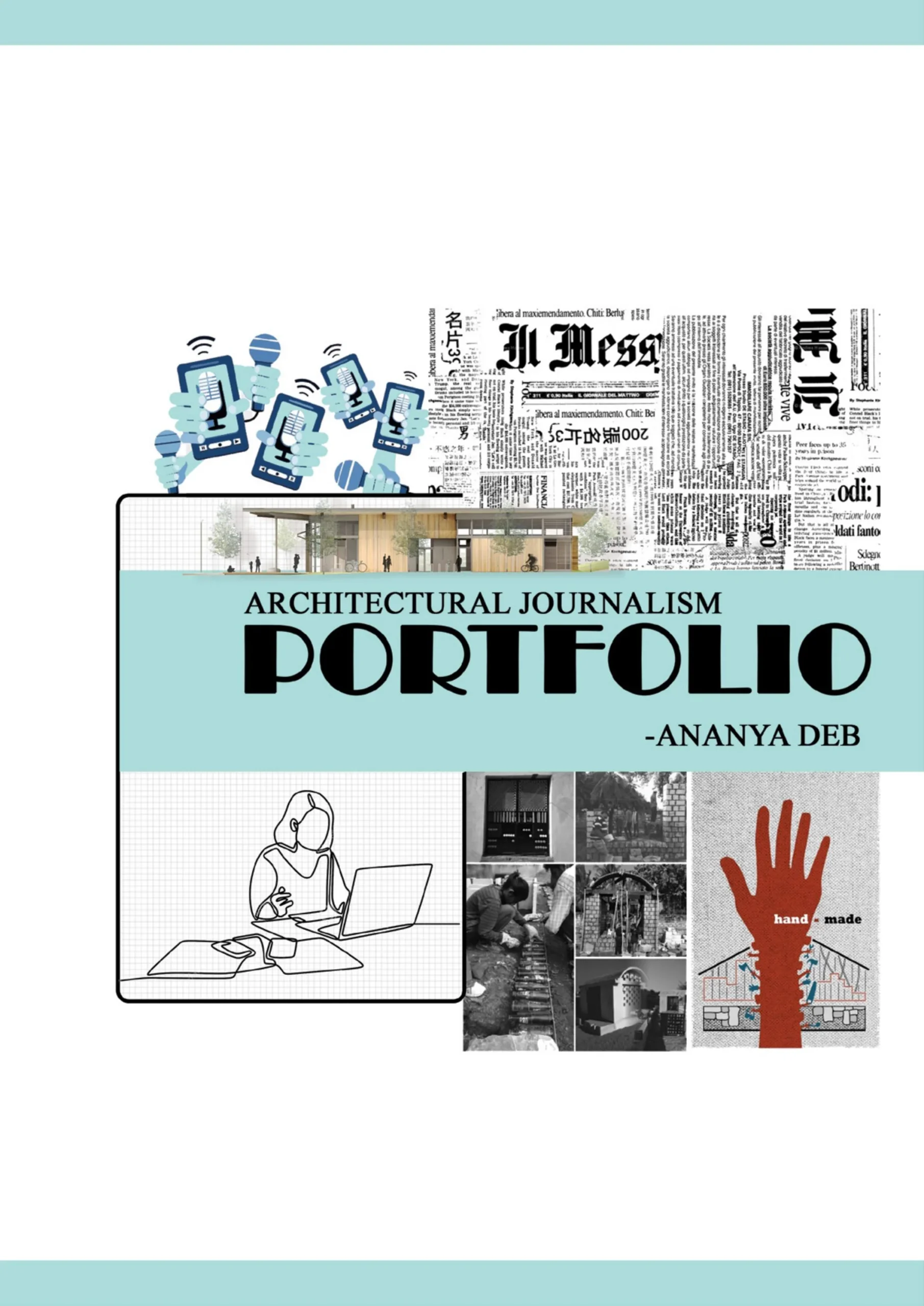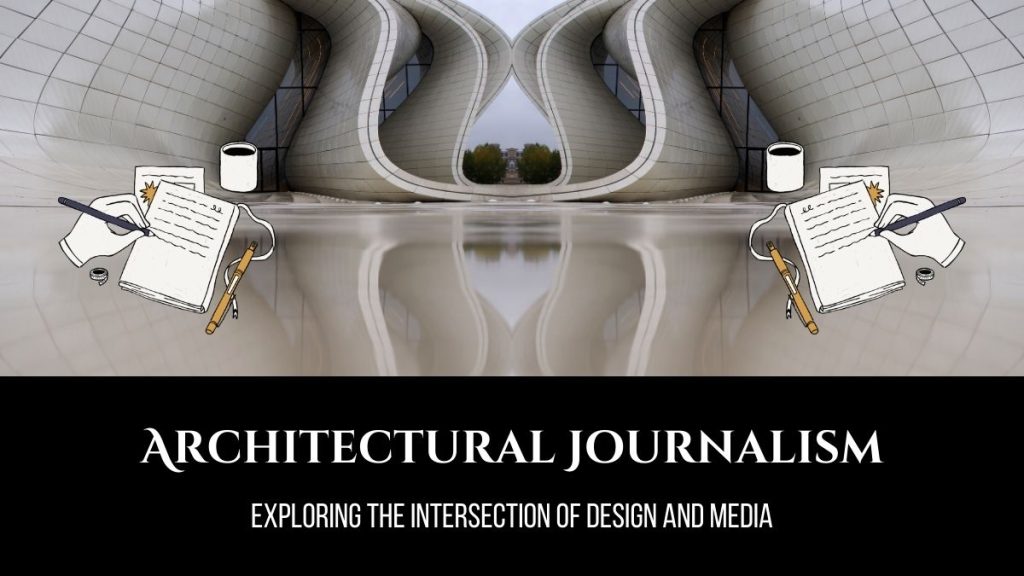Architectural journalism explores and analyzes architecture, design, and urban planning. It bridges the gap between architects and the public.
Architectural journalism plays a crucial role in disseminating information about architectural trends, innovations, and historical perspectives. It serves as a platform where architects, designers, and urban planners share their ideas and projects with a broader audience. This field not only highlights the aesthetic and functional aspects of buildings but also delves into the cultural, social, and environmental impacts of architecture.
Writers in this niche often review buildings, interview industry experts, and report on architectural events and exhibitions. By doing so, architectural journalism fosters a deeper understanding and appreciation of the built environment.
Related Article: Organic Architecture: Harmonizing Nature and Design

Related Article: Modern Architecture Styles: Discover Cutting-Edge Designs
You may also read: How Does Architecture Help Society: Shaping Our World
Introduction To Architectural Journalism
Architectural Journalism is a unique and exciting field. It blends the worlds of architecture and writing. This field helps people understand architectural concepts. It also covers news related to buildings and urban planning.
What Is Architectural Journalism?
Architectural Journalism is the practice of reporting on architecture. It involves writing about buildings, structures, and urban spaces. Journalists in this field write for magazines, newspapers, and online platforms.
They often review new buildings and interview architects. They may also report on the history of famous structures. These journalists make architecture accessible to the public. They help people see the importance of good design.
Importance In Modern Media
Architectural Journalism plays a key role in modern media. It brings attention to important architectural works. This field also raises awareness about urban issues.
Many people are interested in architecture. They want to know about new buildings and design trends. Architectural Journalism meets this demand. It provides detailed and insightful coverage.
Journalists in this field often collaborate with architects. They also work with city planners and designers. Their articles can influence public opinion. This can lead to positive changes in urban areas.
| Benefit | Description |
|---|---|
| Education | Teaches the public about architecture |
| Awareness | Raises awareness about urban issues |
| Influence | Can influence public opinion and policy |
Architectural Journalism also helps preserve architectural heritage. It documents buildings and structures. This documentation can be valuable for future generations.
Overall, Architectural Journalism is an essential part of the media landscape. It connects people with the built environment. It also fosters a deeper appreciation for architecture.
Related Article: Virtual Reality in Architecture Design: Revolutionizing Building Concepts

Credit: uni.xyz
Related Article: Brutalist Architecture Characteristics: Unveiling Bold Design Elements
Role Of An Architectural Journalist
An architectural journalist bridges the worlds of architecture and media. They tell stories about buildings, design trends, and urban planning. Their work shapes public perception and influences industry trends. They provide valuable insights into the built environment.
Skills Required
Becoming an architectural journalist requires a unique skill set. Here are some key skills:
- Writing Skills: Clear and engaging writing is essential.
- Research Skills: They must uncover facts and details.
- Analytical Skills: They analyze architectural designs and trends.
- Visual Literacy: Understanding and interpreting visual content is crucial.
- Communication Skills: They often interview architects and designers.
Daily Responsibilities
An architectural journalist’s day is diverse. Here are some common tasks:
- Research: They gather information on new projects and trends.
- Writing Articles: They write articles for magazines, blogs, or newspapers.
- Interviewing Experts: They talk to architects, planners, and designers.
- Attending Events: They attend industry events and exhibitions.
- Editing: They revise their work for clarity and accuracy.
| Task | Description |
|---|---|
| Research | Gathering data on architectural projects and trends. |
| Writing Articles | Creating content for various media outlets. |
| Interviewing Experts | Talking to industry professionals for insights. |
| Attending Events | Participating in industry-related events and exhibitions. |
| Editing | Revising articles for clarity and accuracy. |
Impact Of Media On Architecture
The media plays a crucial role in shaping architecture. It influences how people view buildings and spaces. Media also impacts design trends and architectural styles. Let’s explore how media affects architecture in detail.
Influence On Public Perception
Media shapes how the public perceives architecture. Stunning photos and videos of buildings can captivate audiences. Articles and TV shows can highlight the beauty and functionality of structures. This exposure can make buildings famous.
Sometimes, media coverage can be critical. It can point out flaws and issues in design. This can lead to public outcry and demand for changes. Positive or negative, media coverage impacts how we see and understand architecture.
- Positive coverage can increase a building’s popularity.
- Negative coverage can lead to architectural changes.
- Widespread exposure can make a building iconic.
Shaping Design Trends
Media plays a significant role in shaping design trends. Architects often get inspired by what they see in magazines and online. Popular designs featured in the media can become trends. This can lead to similar styles being adopted globally.
Media coverage can also spotlight innovative materials and techniques. This can encourage architects to experiment and innovate. The media can act as a catalyst for change in the architectural world.
| Media Type | Impact on Trends |
|---|---|
| Magazines | Showcase popular styles and designs. |
| TV Shows | Highlight innovative projects and techniques. |
| Social Media | Spread trends quickly across the world. |

Credit: www.linkedin.com
Related Article: What Characteristics Identify Early Modern Architecture – A Complete Guide
Notable Publications And Platforms
Architectural journalism shines through various publications and platforms. These sources share insights, trends, and innovations in architecture. Let’s explore some leading magazines, journals, and online platforms.
Leading Magazines And Journals
Magazines and journals offer in-depth analyses and high-quality images. Some of the most respected publications include:
- Architectural Digest: Known for its stunning visual content.
- Architectural Record: Focuses on detailed project descriptions and critical essays.
- Domus: Provides a global perspective on architecture and design.
- Dezeen: Highlights the latest architectural trends and news.
Online Platforms And Blogs
Online platforms and blogs offer quick access to architectural news. They feature articles, galleries, and interactive content. Notable platforms include:
- ArchDaily: Offers daily news, projects, and competitions.
- Designboom: Covers a wide range of design and architecture topics.
- Contemporist: Features contemporary architecture and design projects.
- Archinect: Provides a community-driven space for architects and designers.
These publications and platforms are essential for anyone interested in architecture. They provide valuable insights and inspiration.
Challenges In Architectural Journalism
Architectural journalism is a unique field. Writers face many challenges every day. These challenges can be tough but also rewarding. Let’s explore some of the main challenges.
Balancing Creativity And Accuracy
Architectural journalists need to be creative. They must write engaging stories. But they also need to be accurate. Facts and details must be correct. Balancing these two aspects is hard.
Imagine writing about a new building. You want to describe its beauty. But you also need to provide its dimensions. You have to check your sources. You can’t make mistakes. This balance is crucial for credibility.
Dealing With Criticism
Criticism is part of journalism. Architectural journalists often face harsh reviews. Some people may not like their work. They need to handle this criticism well.
There are different types of criticism. Some can be constructive. This helps journalists improve. But some can be negative and hurtful. Journalists need thick skin. They must stay positive and keep working hard.
Here are some tips for dealing with criticism:
- Listen carefully: Understand the points being made.
- Stay calm: Don’t react immediately.
- Learn from it: Use constructive feedback to improve.
- Ignore the noise: Some criticism isn’t worth your time.
Related Article: Alternative Careers for Architects: Exciting New Paths to Explore

Credit: issuu.com
Related Article: The Timeless Appeal of Brick in Modern Architecture: A Complete Guide
Future Of Architectural Journalism
The future of architectural journalism holds exciting possibilities. New technologies and trends shape the industry. Let’s explore how these changes impact the field.
Emerging Technologies
Virtual Reality (VR) and Augmented Reality (AR) are transforming architectural journalism. These technologies allow readers to experience buildings in 3D. Journalists use drones for aerial photography, offering unique perspectives.
Artificial Intelligence (AI) helps in content creation and analysis. AI tools assist in generating accurate reports and insights. 3D printing is another game-changer. It allows journalists to create scale models of buildings.
| Technology | Impact |
|---|---|
| Virtual Reality (VR) | 3D building tours |
| Augmented Reality (AR) | Enhanced reader experience |
| Drones | Aerial photography |
| Artificial Intelligence (AI) | Content creation and analysis |
| 3D Printing | Scale models |
Predictions And Trends
Sustainability will dominate architectural journalism. Green building designs and eco-friendly materials are in focus. Journalists highlight projects that reduce carbon footprints.
Urbanization trends are also significant. Writers cover smart cities and urban planning. They discuss the challenges of growing urban populations. Digital platforms will continue to grow. Online magazines and blogs gain popularity.
- Focus on sustainability
- Coverage of urbanization
- Growth of digital platforms
Interactive content will engage readers more. Articles with videos, infographics, and interactive maps attract more attention. Collaborations between architects and journalists will increase. These partnerships will provide deeper insights and richer stories.
1. Interactive content
2. Collaborations
Related Article: Architectural Design Process: Unveiling Creativity

Related Article: Architectural Design Concepts: Unleash Creativity
You may also read: Architectural Storytelling: Crafting Spaces with Narratives
Conclusion
Architectural journalism bridges the gap between architecture and the public. It highlights design trends, innovations, and sustainable practices. This field offers unique career opportunities for passionate storytellers. Dive into architectural journalism to contribute valuable insights and foster appreciation for the built environment.
Start exploring this dynamic and rewarding domain today.
Related Article: How to Choose the Right Architect: Top Expert Tips
You may also read: Best Architecture Books to Inspire Your Next Design Masterpiece
